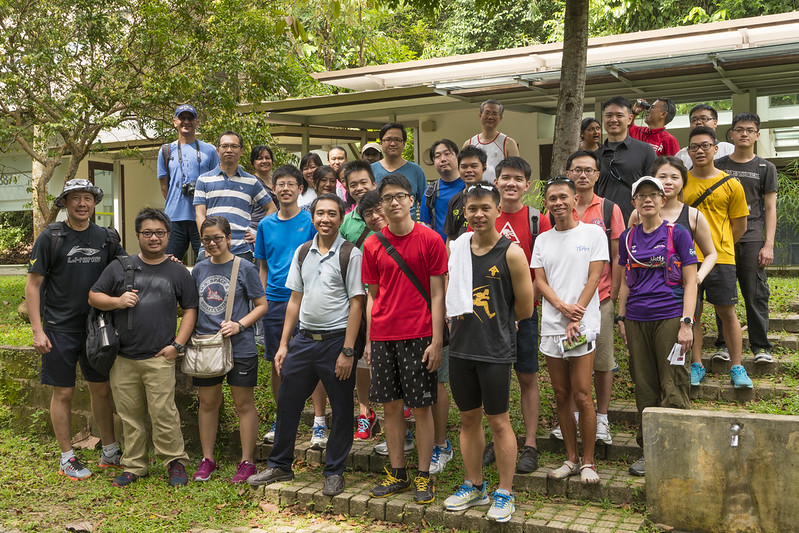
The Wallace Trail at Bukit Timah is named in honour of Alfred Russel Wallace, the British naturalist who independently conceived the theory of evolution through natural selection. He visited Singapore many times from 1854 – 1862 as part of his eight-year stay in the Malay archipelago. To get closer to the remaining primary forests, Wallace stayed with a French Roman Catholic missionary at St Joseph’s in Bukit Timah district. During his time in Singapore, Wallace trekked daily into the hilltops and collected thousands of insects and birds.
NUS science historian Dr. John van Wyhe is one of the world’s foremost scholars on Charles Darwin and Alfred Wallace. According to one of his websites, Wallace Online, Wallace stayed several times in Singapore, in total 228 days. He later lost some letters and a notebook that described his time in Singapore. So when he came to write his great book of travels, the Malay Archipelago (1869), Singapore was mostly described from memory. Although writing from memory, Wallace nevertheless wrote one of the most charming and apt descriptions of mid-nineteenth-century Singapore.
Photo below: The Wallace Trail (marked in purple), located to the north of the Bukit Timah Summit

On Feb 18, 2017, the Humanist Society organised an outing to the trail. We placed volunteers at the nearest MRT station (Hillview) and bus stops (near car park B) in order to guide visitors to the remote entrance:

We gathered at the beautiful Wallace Education Centre where information boards are provided to explain who Wallace is, his scientific accomplishments and the history of the Dairy Farm area and Bukit Timah nature reserve:

At around 10 AM, we started walking along the trail. People were given some written guides, provided by NParks in PDF and printed by the Humanist Society.
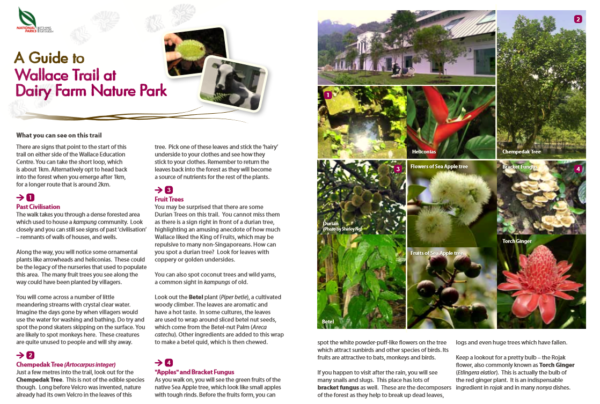
One of the first sights we saw was the Chempedak Tree, commonly known as the jackfruit tree. However, the species we encountered was not the edible type. We also spotted some fallen jackfruits lying on the ground.
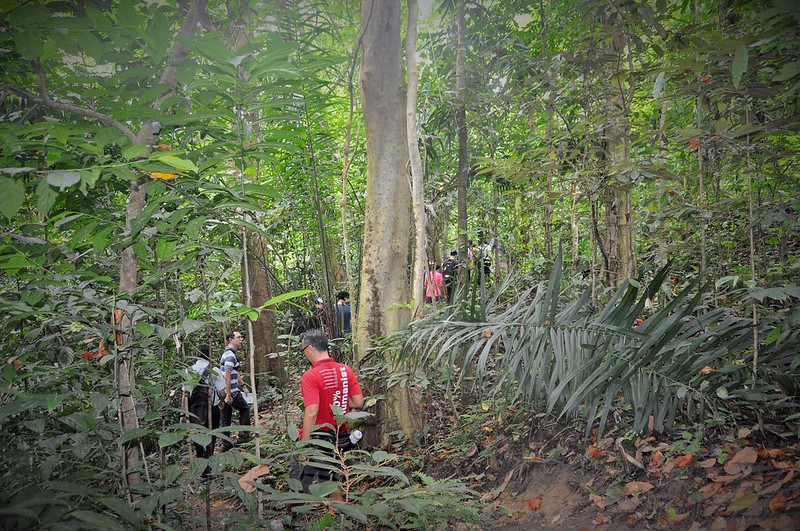
We saw a durian tree near the beginning of the Wallace Trail. Despite the area being a former kampung site and a secondary rainforest, the leaf canopy is still quite thick and beautiful.

Many fruit trees can be found in the area. We found some fallen figs on the ground too. Sign boards provided some history about Alfred Wallace’s time in Singapore. He loved eating durians!
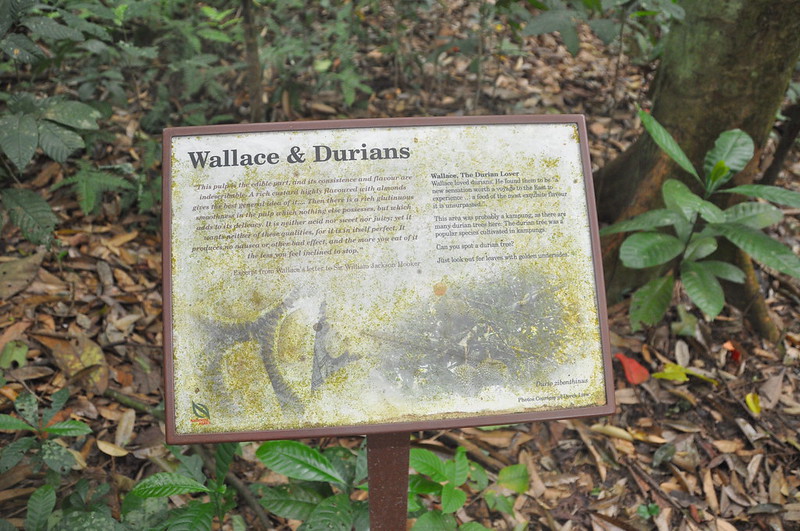
One of our volunteers, Chee Hoew, helped to explain some of the plant life in the area.
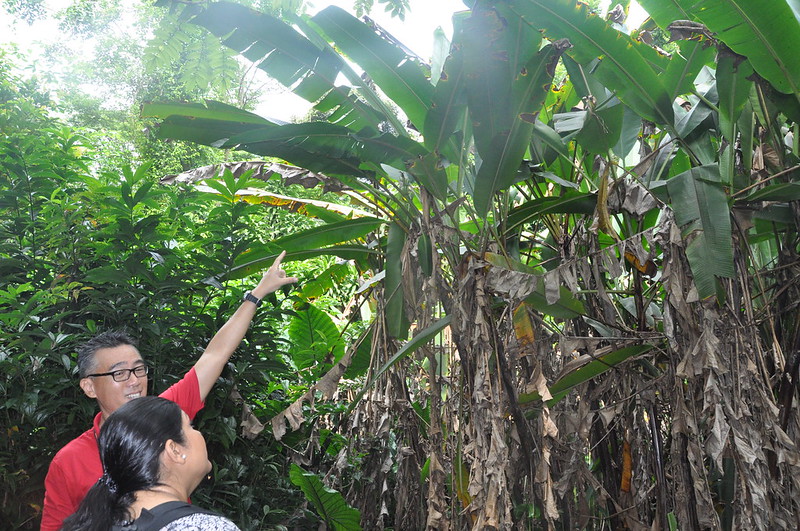
There were many fallen logs along the trail and we were able to observe the polypore (also called the bracket fungus) growing on them. These fungi are decomposers of the forest as they help to break up dead leaves and fallen huge trees. They play a very significant role in nutrient cycling and carbon dioxide production of forest ecosystems.
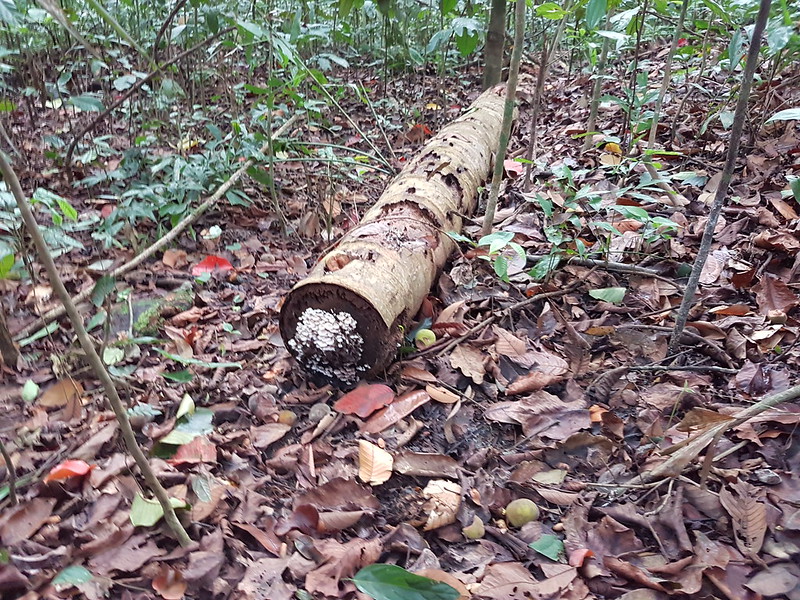
We spotted the Costus lucanusianus flower along the way, also known as the African Spiral Flag.
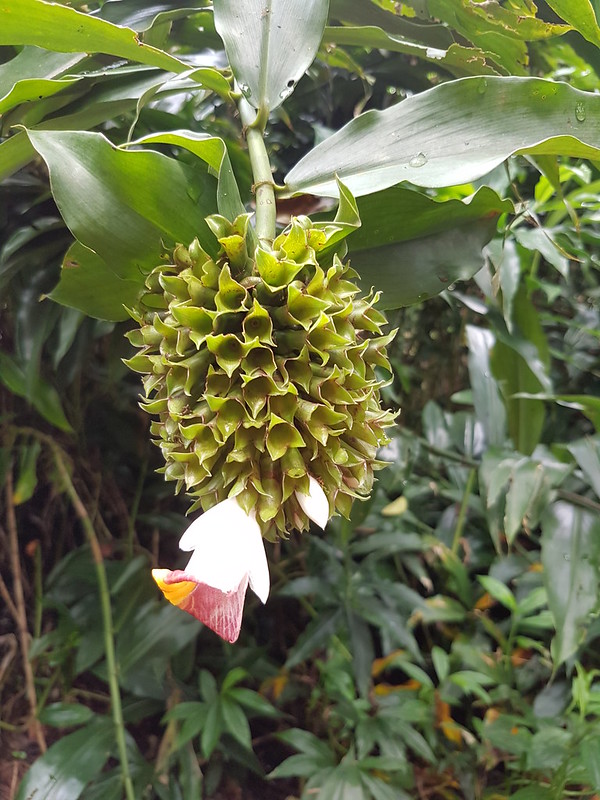
Signs along the way taught us that exotic beetles were among Wallace’s passions as a collector of new species.
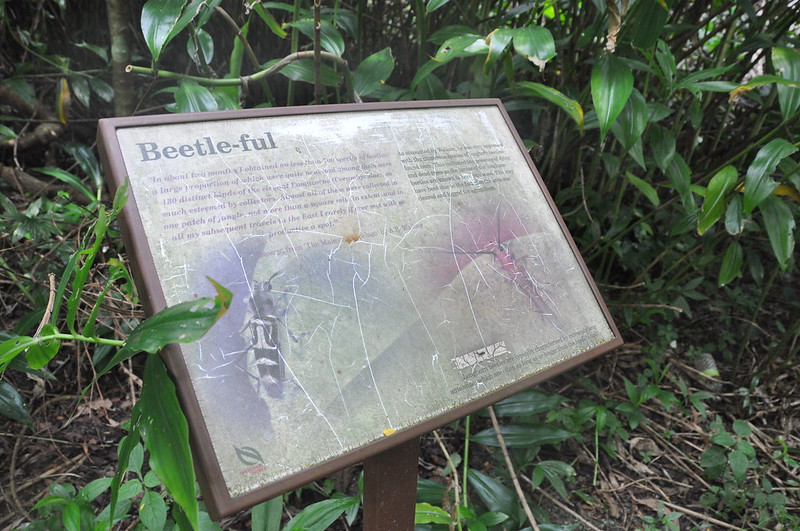
The trail started as a narrow path but eventually gave way to a more open area where we could see monkeys! We followed the monkey for some distance as it jumped from tree to tree along the trail.
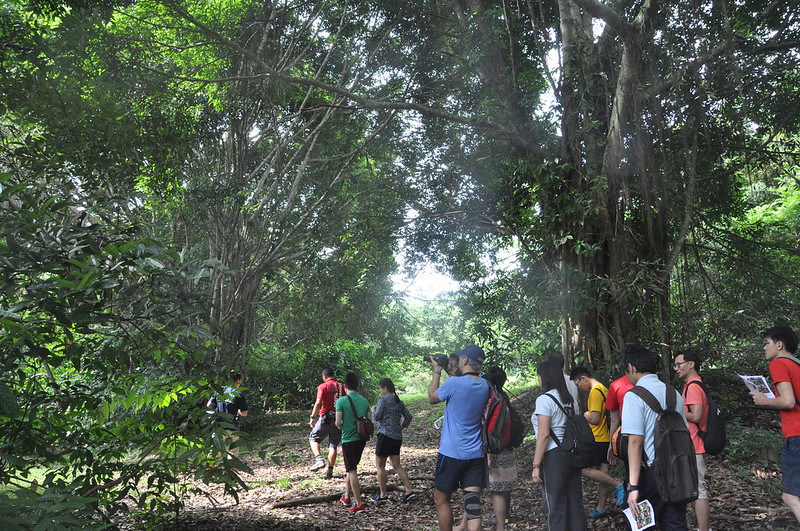
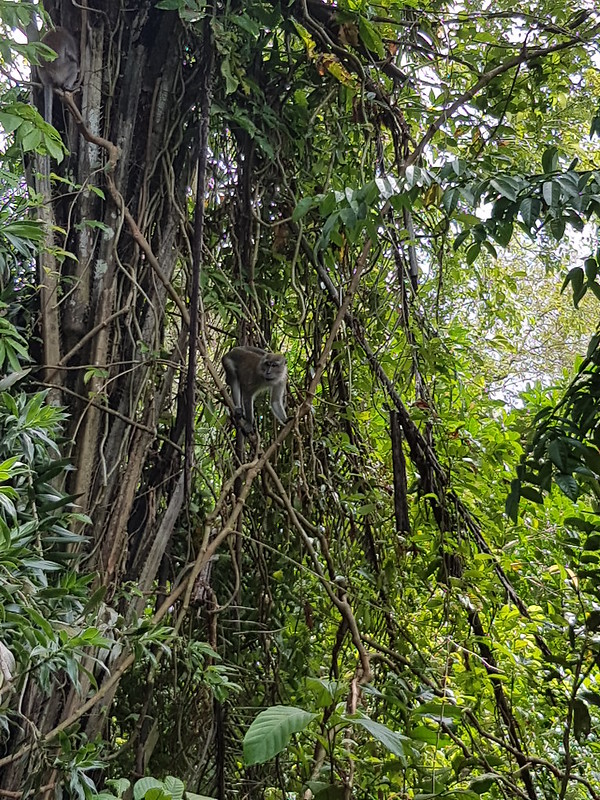
Thankfully, the weather was good and we enjoyed the beauty of the natural forest path. The soil was slightly damp from some rains earlier.
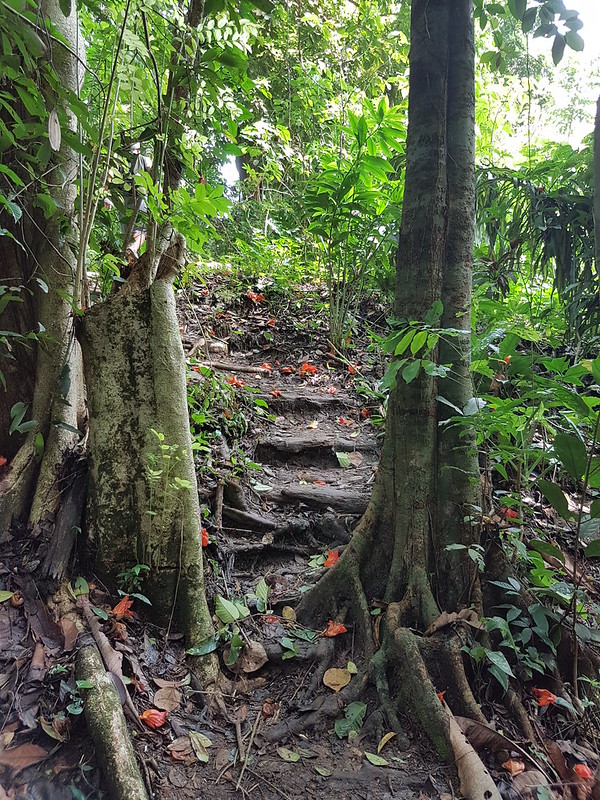
A majestic banyan tree greeted us along the way. We also spotted sugar canes and plenty of banana trees, probably left behind by the kampungs.
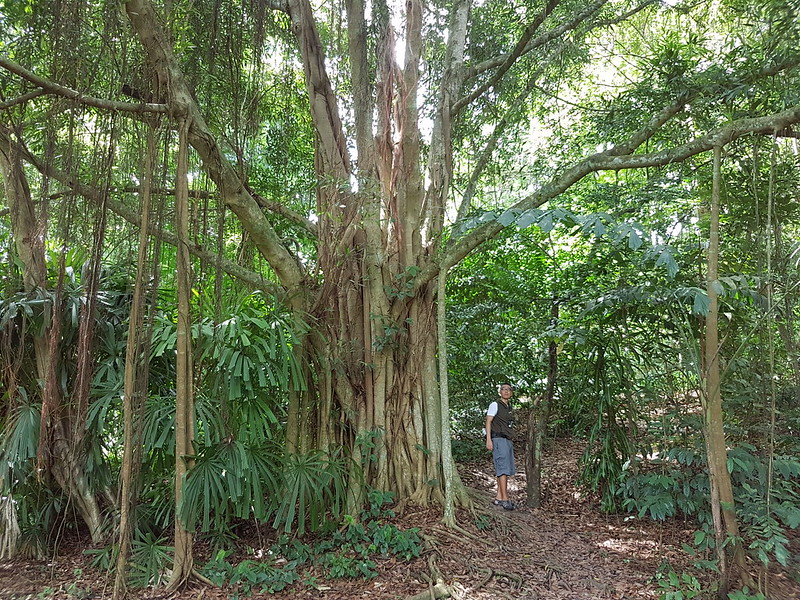
We also spotted some leaves that resembled the Piperaceae. Common names include Wild Pepper, Wild Betel, Kadok, Kaduk, Daun Kaduk, Chabei, Sri Tanah, Chaa Phluu, La Lot, Akar Bugu, Sirih Duduk.
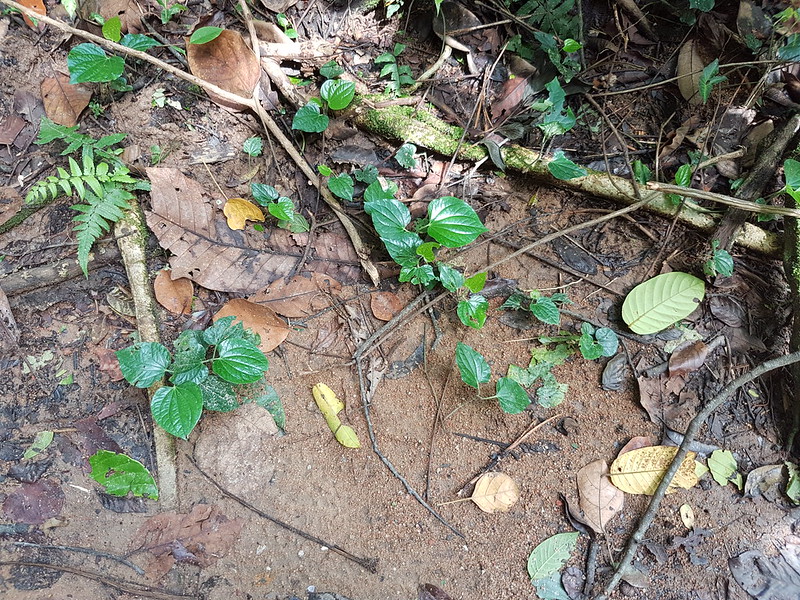
We reached the end of the Wallace trail around 1050am. After some rest, a Humanist Society volunteer took the opportunity to explain the Wallace Line, a line drawn by Wallace in 1859 separating the Asiatic species and Australian species in West and East Indonesia. The line covers very deep ocean in the middle of Indonesia. During the ice age, in spite of the lower sea levels, an ocean still separated the species on the two sides of the line. As a result, the Asian and Australian side developed differently. Wallace’s observations of differences on two sides of the line made him one of the founders of biogeography.

Source: https://coraltriangleadventures.com/
Towards the end of the event, we trekked a little onto Bukit Timah hill via the northern entrance, with an aim to reach the edge of the primary rainforest. Some athletic ones ran to the summit and caught up with us at the Rail Mall. The rest took a slow walk in the direction of Hillview MRT.
At noon, about 20 of us had lunch at Springleaf Prata, located at the Rail Mall near the Green Corridor. The pratas were delicious and several of us ate giant murtabaks. After the lunch, the Humanist Society held one executive committee meeting to discuss the upcoming annual general meeting, and another humanist youth meeting to discuss pastoral care.
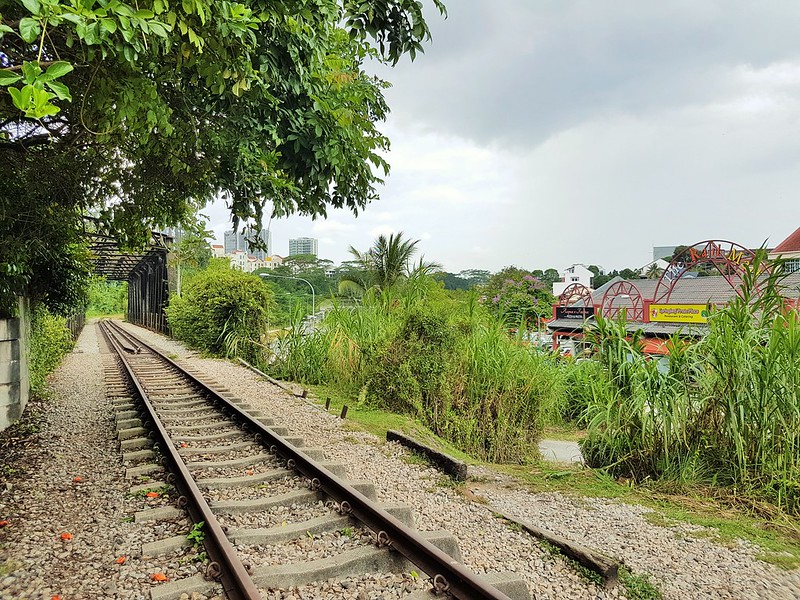

Why humanists celebrate Darwin Day
Darwin Day is a celebration to commemorate the anniversary of the birth of Charles Darwin on February 12, 1809. It began in the United States back in the 1990s to commemorate the anniversary of the birth of the English naturalist on 12 February 1809. The event is popular in academic communities and humanist groups in the US and parts of Europe. Although it is a global event, Singapore was one of the very few Asian nations, and the only Southeast Asian nation, to celebrate it this year.
Evolution by means of natural selection is the process by which traits that enhance survival and reproduction become more common in successive generations of a population of an organism. These traits arise from the random mutation of genes. Traits which enhance the survival of an organism will become more common in successive generations.
Evolution is also very important to humanists as for the first time in thousands of years, humans no longer have to depend on creation myths. Evolution provides us a fact-based, inspiring, narrative of how we humans came to be here, and what will become of us. Evolution also explains why we are capable of both great kindness and great cruelty, and teaches us to be wary of dangers such as genetic diseases and antibiotic resistance. For the first time in history, evolution has taught humans that *you can be good without god.*
Evolution has freed us for these creation myths, which can be very cruel and demeaning to the value of humans beings and life forms on this planet. It is central to the development of secular humanism and giving us a powerful purpose of life. The Humanist Society will continue to organize Darwin Day every year. If you have any suggestions for the next Darwin Day, contact us at info@humanist.org.sg




